With their sweet, little faces, and their fearless tenacity, you may think training a miniature schnauzer to be a well-behaved dog will be difficult. However, with the right attitude and a solid plan in place, your beloved new family member will be starting off on the right paw in no time! Keep reading to understand timelines, recommended cues, and more when it comes to training your miniature schnauzer.
About These Sassy and Adorable Pocket Pups
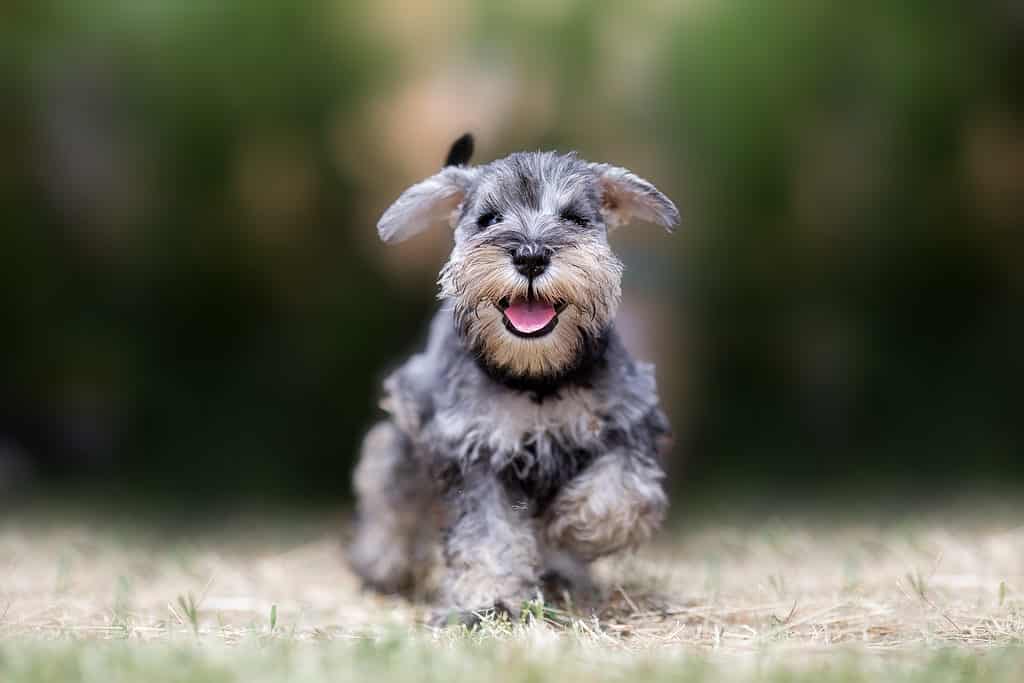
Miniature schnauzers make great furry family members.
©Lunja/Shutterstock.com
Miniature schnauzers are known as a great hypoallergenic option for families hoping to welcome a dog into their homes. While these pint-sized pups only grow to be about 12-14 inches tall and weigh 11-20 pounds, their 12-15 year lifespan helps guarantee they’ll take up plenty of time in your life. Although cute, these tiny tanks were originally bred as ratting dogs and are a top dog breed for killing snakes!
Are Miniature Schnauzers Hard to Train?
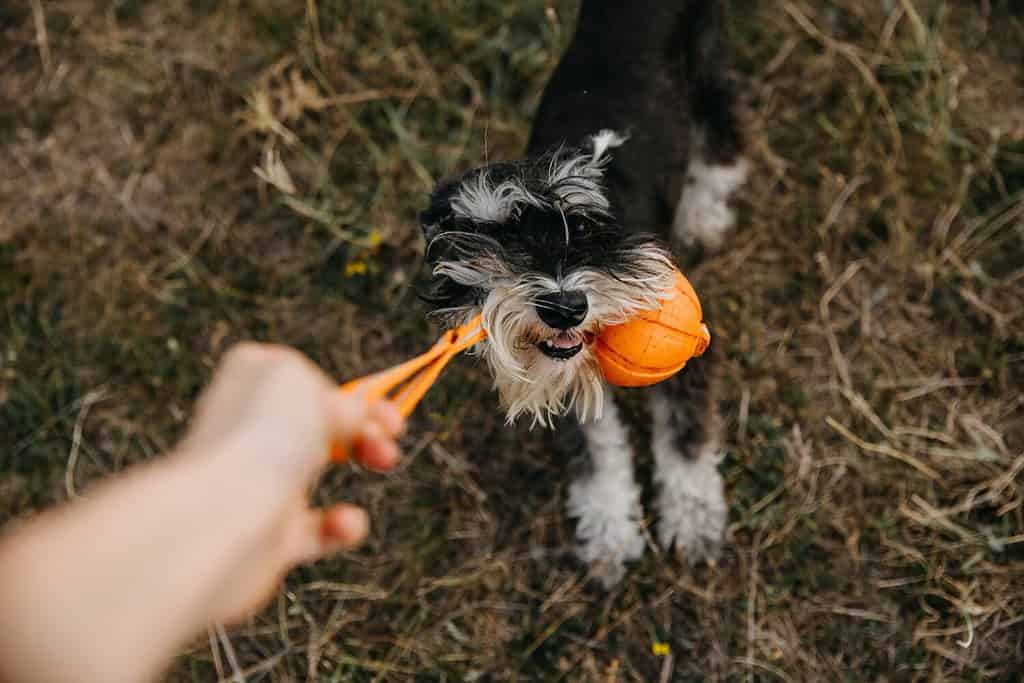
Miniature schnauzers are intelligent dogs but can be stubborn.
©Natalia Bostan/Shutterstock.com
According to the American Kennel Club (AKC), miniature schnauzers are not only intelligent dogs but relatively eager to please, as well. However, one drawback is that they can be relatively stubborn, meaning training may not always go as planned. Follow these simple tricks to ensure a successful training session every time with your pup:
- Start Training Right Away – while cute, your new puppy should begin learning as young as possible. Start with easy commands and introduce them to training slowly by rewarding good behavior consistently.
- Keep It Short and Simple – puppies can lose interest fast. Keep your training sessions short, and don’t increase the difficulty too quickly.
- Focus on the Positives – give your pooch plenty of rewards, whether that be a tasty treat, a favorite snack, or just tons of praise.
Raising a Well-Rounded Miniature Schnauzer
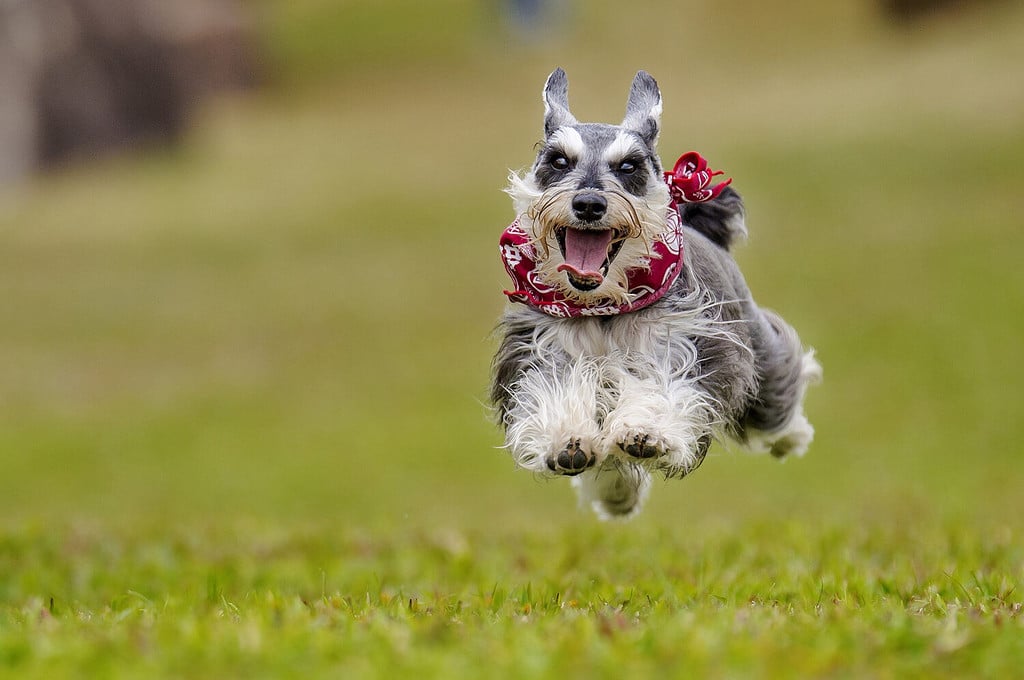
Training a new dog starts with teaching them manners in your household first.
©L-N/Shutterstock.com
Whether adopting from a shelter or purchasing a puppy from an ethical miniature schnauzer breeder, you should begin training as soon as your pooch arrives home. Early training will guide your new pup to help them become a well-mannered adult dog. Start with these crucial topics first:
The Name Game – Are you keeping the name they came with or giving your pup a new one that fits their personality better? Either way, reward your new pooch profusely whenever you say their name and they give you their full attention.
Crate Training – Dogs naturally seek out quiet and safe spaces to unwind or to escape overwhelming situations. Crate training can also help train your dog to calm down after exciting playtime or exercise. However, never use a crate as a punishment tool.
House Training – One of the most frustrating phases of welcoming a new puppy home can be potty training. For your home and your sanity, start house-breaking your new pooch as soon as you can. Tools such as dog doorbells can be super useful for expediting training.
Acclimate Your Pup to Being Touched – Throughout their life, your pooch will interact with several humans outside your family. From regular grooming appointments to annual vet visits, your pet will need to be accepting of being touched by unfamiliar people outside of the home.
Introduce Your Puppy (Safely) to as Many New Experiences as Possible – The first four months of a puppy’s life is their most important developmental stage. Socializing your furry family member is crucial to minimizing behavioral issues for them as an adult dog.
Basic Miniature Schnauzer Training Commands
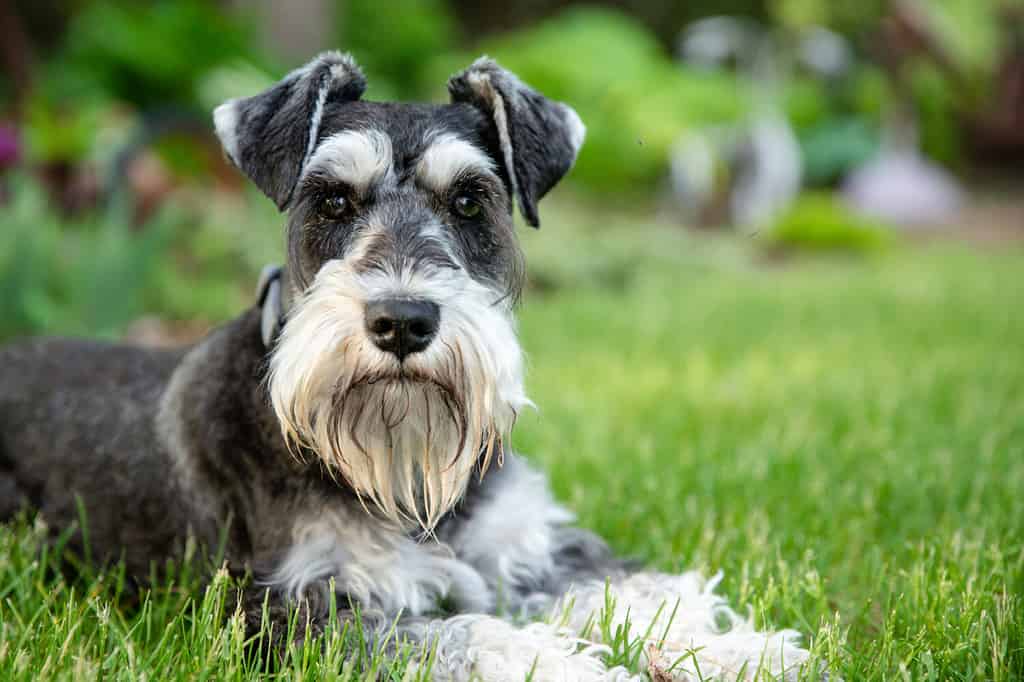
When beginning training your miniature schnauzer, start with basic commands first.
©Debra Anderson/Shutterstock.com
In addition to the common household manners mentioned above, the following commands are great ways to introduce your new miniature schnauzer to training:
Sit – The seated position is a great way to have your dog wait patiently and calmly, either for a treat or before you set their food down. Having your puppy sit calmly to be a pet is also a great way to discourage jumping up on people.
Down/Lay Down – Putting your dog in a down position can help in the future when you want them to unwind after exciting play or exercise.
Stay – Use this command if you have a sudden and unexpected cleanup in the kitchen or if you’re trying to snap a family photo for this year’s holiday card.
Come – Having a solid recall is not only convenient, but it can also help keep your dog safe.
Off – This command comes in handy if there are certain pieces of furniture you would prefer they stay off of, as well as to prevent them from rudely jumping up on people.
Heel/With Me – Walking nicely on a leash is non-negotiable for your pooch. From regular walks to fulfil their exercising needs, to various outings in the community, it’s important to teach your puppy how to appropriately behave in public.
No/Leave It – This command is useful to prevent your dog from scarfing up any potentially unsafe food scraps that fall off the counter or from eating any debris found during your daily walks.
Place – Sending your dog to a specific place, such as a nearby dog bed, is a great way to allow visitors to enter your home without being jumped all over by an excited wigglebutt.
What Are Common Behavioral Problems with Miniature Schnauzers?

The two most common problems owners encounter with miniature schnauzers are biting and barking.
©Debra Anderson/Shutterstock.com
While miniature schnauzers are small and adorable, some of their bad habits are anything but cute. The two most common behavioral problems with these little lovebugs are biting and barking. It’s not uncommon for miniature schnauzers to give little nips when playing as puppies. To prevent this from becoming an ongoing issue, discourage the behavior by calmly ending playtime if they bite. Additionally, providing plenty of toys for them to play with can reduce their desire to nip. Finally, miniature schnauzers are known to be very vocal due to their watchdog history. To try to minimize the barking in your home, reward your pup when the alert is valid and try to redirect their attention to something else when the barking is inappropriate.
Enjoying Life with Your New Miniature Schnauzer
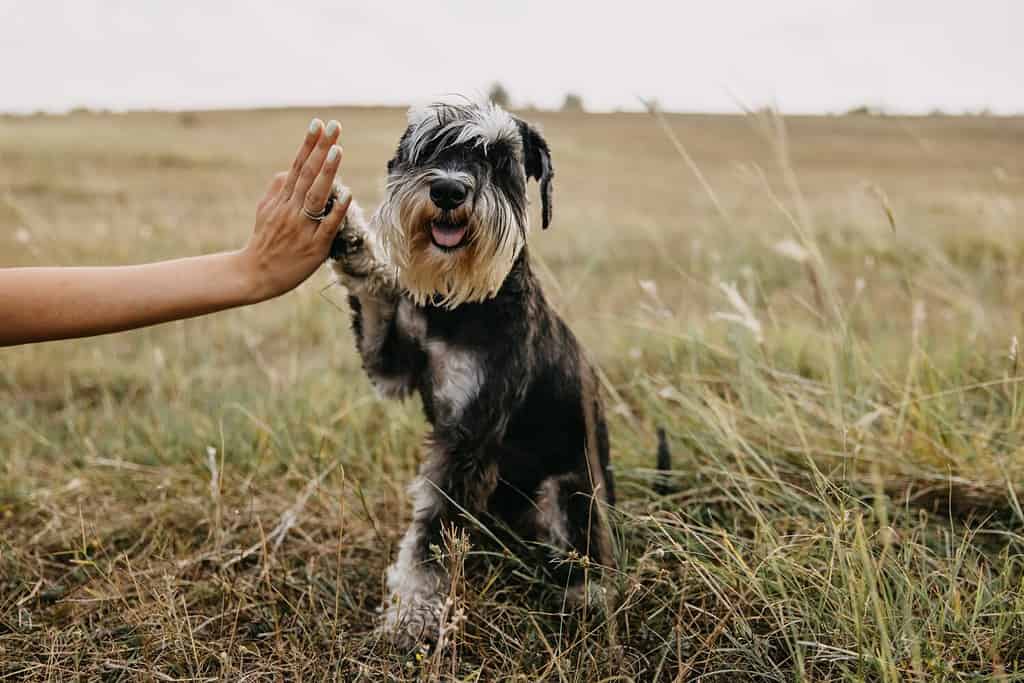
Miniature schnauzers are playful and affectionate pups.
©Natalia Bostan/Shutterstock.com
Miniature schnauzers are cute little canines, but don’t let their looks deceive you. Not only are they tough and fearless, they’re unbelievably smart, as well. With the proper training, these adorable dogs can be a wonderful, affectionate member of your family for many years.
The photo featured at the top of this post is © Lunja/Shutterstock.com
Ready to discover the top 10 cutest dog breeds in the entire world?
How about the fastest dogs, the largest dogs and those that are -- quite frankly -- just the kindest dogs on the planet? Each day, AZ Animals sends out lists just like this to our thousands of email subscribers. And the best part? It's FREE. Join today by entering your email below.
Thank you for reading! Have some feedback for us? Contact the AZ Animals editorial team.







